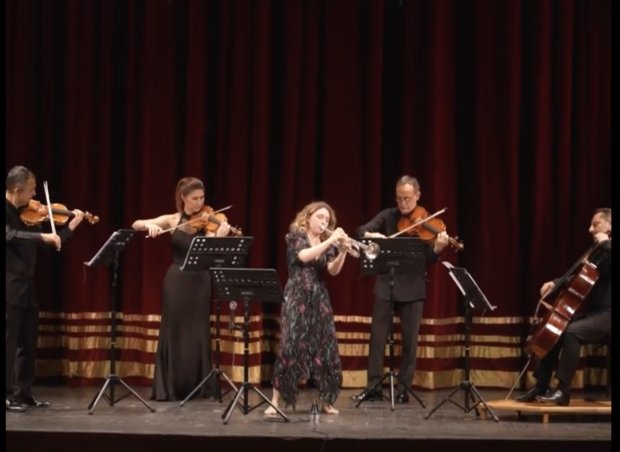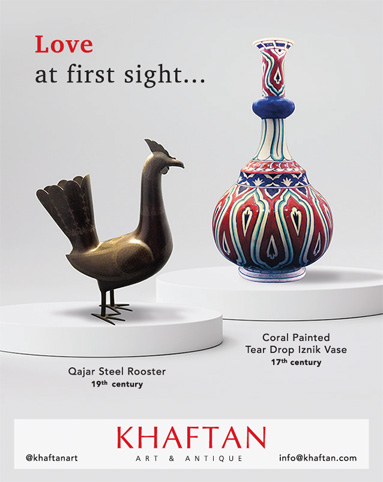On Monday, June 5 I attended a concert at the Süreyya Opera House in Kadıköy – one of the events of the 51st İKSV Istanbul Music Festival – in which the Borusan String Quartet were joined by Ms. Lucienne Renaudin Vary, a 24-year-old French trumpeter.
Seating myself in the auditorium, I could hear audience members around me conversing in Spanish, and wondered why. Having only just set foot in Istanbul after a sojourn in delectable Manchester, I had neglected to re-read my notes about the concert, and was thus woefully unprepared: had I been less dazed and disoriented, I would have seen that tango music featured prominently on the programme. In fact, it was only when the Borusan Quartet broke into The Four Seasons of Buenos Aires that I finally made the connection.
The background to this work, written by the Argentine composer Astor Piazzolla (1921–92) and featuring quotations from Vivaldi’s The Four Seasons, is described by the ‘Sage Gateshead’ website in the following words:
Piazzolla wrote the Four Seasons of Buenos Aires between 1965 and 1970, originally as four separate pieces for violin, piano, electric guitar, double bass and bandoneon – a Spanish accordion instrument popular in tango music. Piazzolla was a virtuoso of the bandoneon, having first learnt to play aged 8. He performed with a number of tango orchestras, and this music, along with classical and jazz, influenced his compositional style.
Having been taught to play Bach on his bandoneon by Hungarian pianist Béla Wilda, a former pupil of Rachmaninov, Piazzolla then received tuition from the eminent Argentine composer Alberto Ginastera; during this time, he studied scores by Stravinsky, Bartók and Ravel, and learnt orchestration. As a result of these efforts, in 1954 he was awarded a grant by the French government to study with legendary composition teacher Nadia Boulanger at the Fontainebleau conservatory in Paris. By this time, Piazzolla had convinced himself that his future lay in classical music, and had thus determined not to reveal to his teacher the fact that he had written tangos and music for the bandoleon. Accordingly, he introduced himself to her by playing some of his compositions in the European mould. She was not impressed. Finally, with some trepidation, he played her his tango Triunfal. The ‘Sage Gateshead’ website describes what happened next:
On hearing it, she said: ‘You idiot! Don’t you know this is the real Piazzolla, not the other one? You can throw all that other music away!’ – and this spurred Piazzolla to continue on his path.
In the following arrangement of Four Seasons of Buenos Aires, the solo violin part is played with considerable verve by Soyoung Yoon. She is accompanied by the Korean Chamber Orchestra – a much larger body of string players than the quartet we had in Kadıköy. (The performance at the Süreyya Opera House did not include Ms. Yoon’s wild cadenzas, by the way.)
Following this, we heard Chau Paris (a short tango by Piazzolla) and an arrangement for string quartet of Danza de la moza donosa (‘Dance of the Graceful Girl’), written – originally for piano – as the second in a set of three pieces entitled Danzas argentinas by Piazzolla’s teacher Alberto Ginastera (1916-1983), who is regarded as one of the leading Latin American composers of the 20th century. Here is a recording of the piano version in which the performer is Lang Lang.
Then Ms. Lucienne Renaudin Vary appeared on stage, and we audience members were immediately struck by her youthful appearance, as well as by the fact that she was in bare feet. It took no more than a few bars for her to demonstrate that both her mastery of the instrument and the maturity of her musicianship are quite remarkable. When playing, she makes pronounced backwards-and-forwards movements and sways with the music; before each entry, she raises her trumpet in a sweeping, dramatic gesture. This clip gives you glimpses of the concert as broadcast to a big screen in a park in Caddebostan: https://www.youtube.com/watch?v=sBJdwv_hWLc. And Here she is in action in a performance of Piazzolla’s Maria de Buenos Aires:
Ms Vary first played the solo part in the Concerto in E flat major for Trumpet and Strings by the Czech composer Johann Baptist Georg Neruda (c.1708 - c.1780), who after gaining a favourable reputation as a violinist and conductor in Prague and Germany became Konzertmeister of the Dresden court orchestra. Although Neruda wrote a goodly number of works – including 18 symphonies and 14 concertos for various instruments – these days the Trumpet Concerto is the only one to receive frequent performance. This recording is by Tine Thing Helseth (another lady trumpeter) with the Norwegian Chamber Orchestra.
I had at first thought that the combination of trumpet and string quartet might not produce a satisfactory sound, with the trumpet drowning all the other instruments out, but in the event I found it not at all lacking in balance, and indeed very refreshing. The next item on the programme was Satie’s Gymnopédie No. 1; the word ‘gymnopédie’ actually means ‘barefoot’, and this was the first time I had heard this work played by an appropriately-clad – or rather, unclad – performer.
Then came three works by Dvořák: Als die alte Mutter, Als ich so in den Himmel sah and Gute Nacht, with the trumpet playing the melody in each case. Als die alte Mutter (usually translated as ‘Songs My Mother Taught Me’) is the fourth of the seven songs in Dvořák’s cycle Gypsy Songs; this extremely popular piece has been arranged for many combinations of voices and instruments. Here, it is played by violinist Augustin Hadelich, accompanied by pianist Charles Owen.
The rest of the programme consisted of more tangos. I was unable to hear the announcement about these unscheduled pieces, and so cannot say by whom they were written. The applause at the end of the proceedings was warm, prolonged and fully deserved; the Borusan Quartet is always a delight to listen to, and the lady with the trumpet was a performer of outstanding ability and enormous stage presence.
Is it not an odd coincidence that the paintings adorning the ceiling of the Süreyya Opera House contain no less than four representations of ladies playing elongated hunting horns? Perhaps, when the building took shape in 1927, someone received a premonition that many years later a real-life female trumpeter would be appearing on the stage. We have yet to see whether or not the other ladies in the paintings, some of whom are riding chariots, will one day be observed steering their vehicles down the middle of Bahariye Caddesi (the street outside the opera house), their flouncy white robes billowing behind them in the breeze. I only hope that if this ever happens, the horses successfully negotiate the tramlines.









